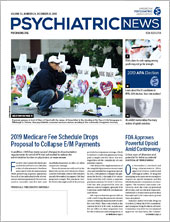As use of e-cigarettes by youth reaches epidemic levels, the Food and Drug Administration (FDA) announced several planned regulatory actions, but health experts are concerned the proposals do not go far enough to reverse the alarming trend.
More than 1 in 5 high schoolers reported past-month use of e-cigarettes in 2018. That represents an increase of e-cigarette use by nearly 80 percent among high schoolers and 50 percent among middle schoolers since last year, according to the 2018 National Youth Tobacco Survey (NYTS) issued last month.
In response, the FDA announced it will seek to ban the sale of traditional menthol cigarettes and restrict access to certain flavors of e-cigarettes—but not all—to specialized stores and online retailers that can verify a purchaser’s age.
“Sales restrictions on some flavors simply does not go far enough in responding to this public health epidemic,” said American Lung Association President and CEO Harold P. Wimmer. He called for the FDA to remove all flavored tobacco products from the marketplace, including all flavored e-cigarettes. “This is an all-hands-on-deck moment for our nation: urgent action is needed at all levels of government.”
Douglas Ziedonis, M.D., M.P.H., associate vice chancellor for health sciences and a professor of psychiatry at the University of California, San Diego, believes that even further limits than have been proposed are warranted.
“I’m concerned that adolescents see e-cigarettes as a safer alternative than they probably are,” he said, adding that for youth, use of e-cigarettes has been shown to be “a gateway to other substance problems.” Whether and when clear evidence will emerge that e-cigarettes cause long-term cell damage and health consequences similar to combustible cigarettes, only time will tell, he said.
The considerable rise in e-cigarette use among young people reversed a recent decline in overall youth tobacco use, driving it instead to a seven-year high, according to the NYTS report. More than one-quarter of high schoolers reported current use of any tobacco product—a 38 percent increase from 2017. E-cigarettes—electronic cigarettes—or “vaping” involve battery-powered devices that heat and vaporize a liquid containing nicotine derived from tobacco.
The rise in e-cigarette use by youth is led by the popularity of “pod mod” cartridge-based e-cigarettes, such as JUUL, according to the NYTS report. They are slim and shaped like a USB flash drive and, with disposable, pre-filled cartridges that can be popped in and out, are far easier to use—and conceal—than previous e-cigarettes. The pods are sold in flavors that appeal to youth, and each contains as much nicotine as a pack of cigarettes. Since launching in 2015, JUUL Labs Inc. has garnered more than 70 percent of the U.S. e-cigarette market share, now valued at $15 billion.
E-cigarettes were introduced to the U.S. marketplace in 2007, and by 2014, they became the most commonly used tobacco product among U.S. youth. There is substantial evidence that vaping is a gateway to combustible cigarettes. An American Journal of Medicine study in 2017 found that young nonsmokers were four times more likely to begin smoking combustible cigarettes after vaping for about 18 months.
“These new data show that America faces an epidemic of youth e-cigarette use, which threatens to engulf a new generation in nicotine addiction,” said Health and Human Services (HHS) Secretary Alex Azar of the NYTS report.
FDA Commissioner Scott Gottlieb, M.D., said he plans to direct the FDA Center for Tobacco Products (CTP) to revisit the compliance policy for flavored e-cigarette products, with one big exception carved out: mint and menthol flavors. Specifically, Gottlieb is seeking to restrict the sale of flavored e-cigarettes to age-restricted, specialty locations, such as vape shops, and online retailers under heightened practices for age verification. However, menthol and mint e-cigarettes would be exempt from these new rules and still be permitted to be widely distributed and sold.
“This reflects a careful balancing of public health considerations,” Gottlieb said. He wants the FDA to strike a balance between “closing the on-ramp for kids to become addicted to nicotine” but still maintaining the on-ramp to e-cigarettes for adult smokers seeking to quit regular cigarettes.
The FDA also plans to issue an advanced rulemaking proposal seeking to ban menthol in traditional combustible cigarettes and cigars, Gottlieb announced. More than half of youth who smoke traditional cigarettes use menthol-flavored ones. Such a ban would likely take several years to advance. ■
The NYTS report, “Notes from the Field: Use of Electronic Cigarettes and Any Tobacco Product Among Middle and High School Students—United States, 2011–2018” can be accessed
here.

